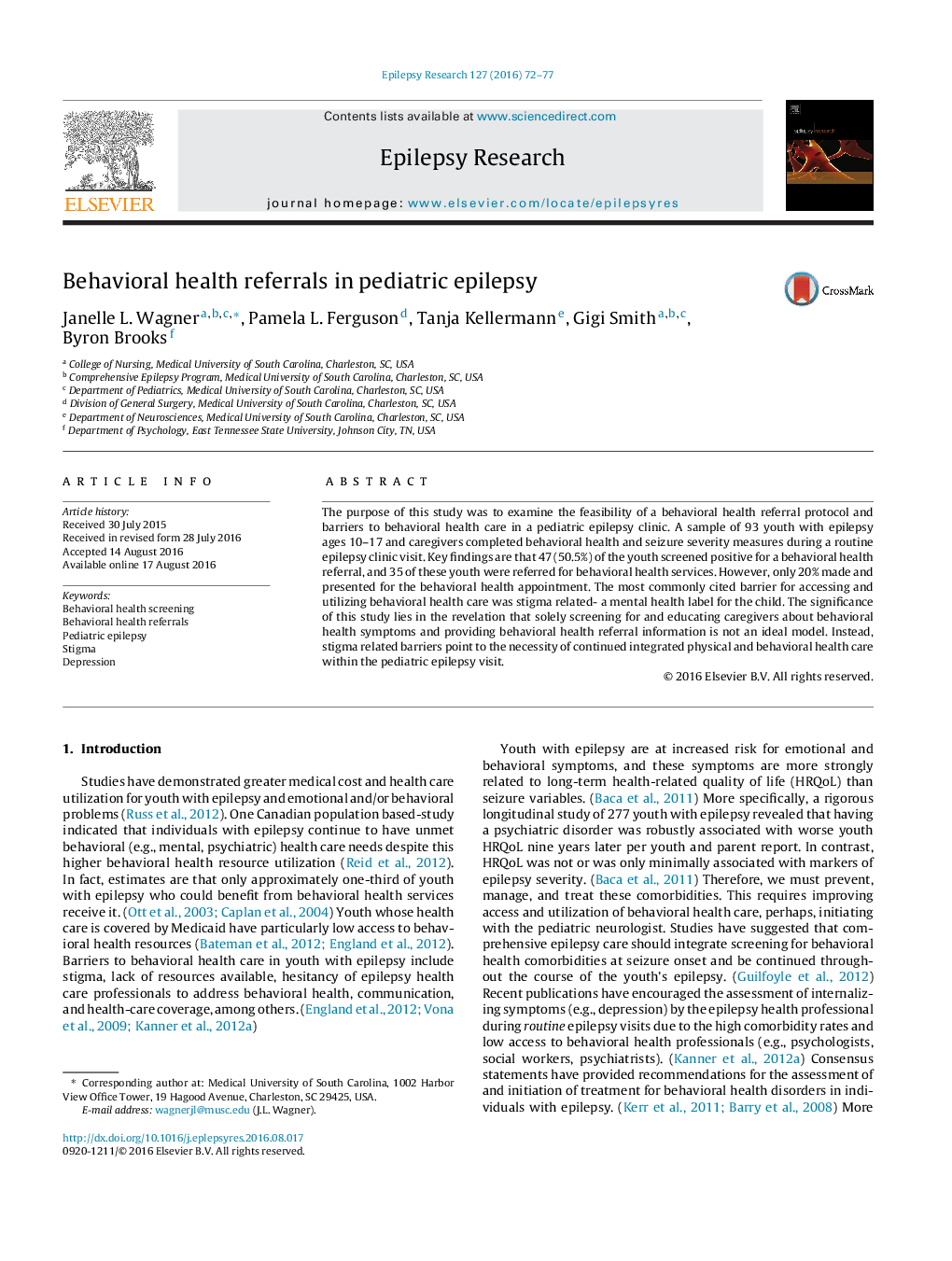| Article ID | Journal | Published Year | Pages | File Type |
|---|---|---|---|---|
| 6015008 | Epilepsy Research | 2016 | 6 Pages |
â¢50.5% of youth screened positive for a behavioral health referral.â¢20% made and presented for the behavioral health appointment preference.â¢Most common barrier for accessing behavioral health care was stigma related.
The purpose of this study was to examine the feasibility of a behavioral health referral protocol and barriers to behavioral health care in a pediatric epilepsy clinic. A sample of 93 youth with epilepsy ages 10-17 and caregivers completed behavioral health and seizure severity measures during a routine epilepsy clinic visit. Key findings are that 47 (50.5%) of the youth screened positive for a behavioral health referral, and 35 of these youth were referred for behavioral health services. However, only 20% made and presented for the behavioral health appointment. The most commonly cited barrier for accessing and utilizing behavioral health care was stigma related- a mental health label for the child. The significance of this study lies in the revelation that solely screening for and educating caregivers about behavioral health symptoms and providing behavioral health referral information is not an ideal model. Instead, stigma related barriers point to the necessity of continued integrated physical and behavioral health care within the pediatric epilepsy visit.
